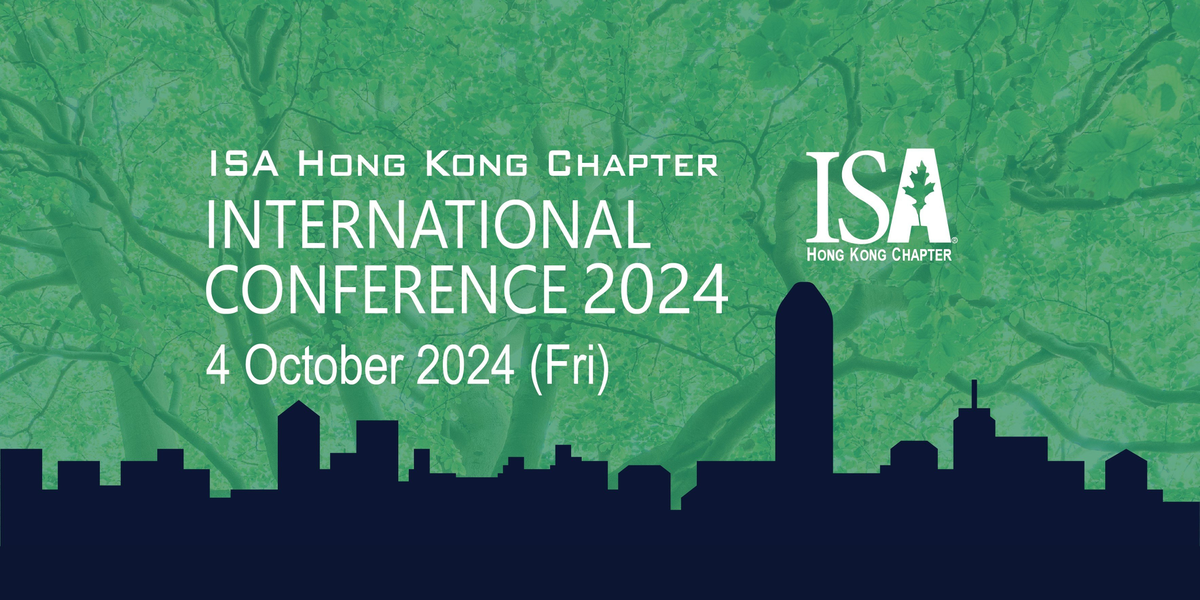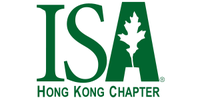Summary
ISA Hong Kong Chapter - International Conference 2024
Exploring Arboriculture & Urban Forestry:
Branch out for a Sustainable City
The conference brings together a diverse array of distinguished experts and practitioners in the field of arboriculture and urban forestry from around the world, exploring from different perspectives, how we can harness the positive impacts of urban trees for a more sustainable city.
Conference:
- Date: 04.10.2024 (Fri)
- Time: 9:30 - 18:15
- Location: Auditorium, 8/F, The Hong Kong Federation of Youth Groups Building 香港青年協會大廈 8 樓演講廳 (21 Pak Fuk Road, North Point) [Quarry Bay MTR Exit C, Model Lane 港鐡鰂魚涌站 C 出口, 模範里] (Map)
- CEUs: 5.5
Post-Conference Workshop:
- Date: 05.10.2024 (Sat)
- Time: 9:15 - 17:30
- Location: Function Room 3, Quarryside 舍區 活動室3 (20 Hoi Shin Lane, Quarry Bay 鰂魚涌海善里20號) [Quarry Bay MTR Exit B, 10 minute walk 港鐡鰂魚涌站 B 出口, 步行10分鐘] (Map)
- CEUs: 5
Early Bird Deadline: 04.09.2024
Registration/Payment Deadline: 30.09.2024 (12:00 noon)
Who Should Attend?
- Arborists, landscape architects, tree and landscape consultants, city planners, policy makers, environmental consultants, urban foresters / municipal arborists, managers of the property management / construction sectors, sustainability manager, NGOs ...
- Anyone who cares about trees or sustainability
- Companies with commitments to tree care and sustainability
Early Bird discounts are currently available now!
Oct 4 & 5, 2024 GMT+8
Add to CalendarQuarry Bay
Hong Kong Island, Hong Kong SAR (China)
Show on map
Speakers
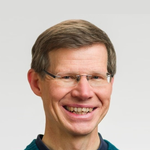
Dr. Steffen Rust
Professor of Arboriculture, University of Applied Science and Art in Göttingen, Germany
Read Bio
Dr. Rita Sousa-Silva
Assistant Professor of Environmental Biology, Institute of Environmental Sciences at Leiden University, the Netherlands
Read Bio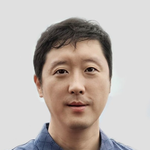
趙慶博士
廣東省林業科學研究院 - 正高級工程師
Read Bio
John Parker
Chief Executive Officer, Arboricultural Association
Read Bio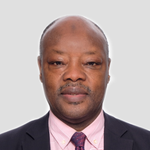
Dr. Lawal Marafa
Professor, Department of Geography and Resource Management, The Chinese University of Hong Kong
Read Bio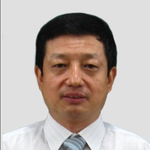
田呈明博士
北京林業大學教授
Read Bio
Agenda
- Day 1 (October 4, 2024)
- 9:30 AM - 6:15 PMConference**The conference will be conducted mainly in ENGLISH**
[Conference - A.M. session]
========================
09:30 - 09:45 | Registration
09:45 - 09:50 | Welcoming
09:50 - 09:55 | Welcoming Remarks [Ms. Cammy So, President of ISA Hong Kong Chapter]
09:55 - 10:05 | Opening Speech [Ms. Angie Au Yeung, Head of Tree Management Office (TMO))
10:05 - 11:05 | 綠美廣東生態建設之森林品質精准提升的內涵、方法與實踐 [趙慶博士] (presentation in Mandarin)
11:05 - 11:50 | Instead of Giving Pills, We Should Plant Trees [Dr. Rita Sousa-Silva]
11:50 - 12:10 | Networking Session
12:10 - 12:55 | Practical Arboriculture Session | 25 Years of Tree Tomography – Practical Use and New Technology [Dr. Steffen Rust]
12:55 - 13:15 | Circular Urban Planting - Environmental Protection Department (EPD) [Mr. Tang Kin Fai] (presentation in Cantonese)
========================
13:15 - 14:15 | Lunch
========================
[Conference - P.M. session]
========================
14:15 - 14:30 | Registration
14:30 - 15:15 | Trees as Components of Livable Sustainable Communities: An Antidote for the Pursuit of the SDGs [Dr. Lawal Marafa]
15:15 - 16:00 | Best Practice in Developing and Implementing a Tree Strategy: The Case Study of Growing the Stonehouse Community Arboretum [Mr. John Parker]
16:00 - 16:20 | Networking Session
16:20 - 17:05 | 樹木醫學的機遇與挑戰 [田呈明博士] (presentation in Mandarin)
17:05 - 17:50 | Practical Arboriculture Session | Recent Results from Research on the Pulling Test Method [Dr. Steffen Rust]
17:50 - 18:10 | Panel Discussion
18:10 - 18:15 | Closing
- Day 2 (October 5, 2024)
- 9:15 AM - 5:30 PMPost-Conference Workshop** The workshop will be conducted in ENGLISH**
09:00 - 09:15 | Registration
09:15 - 11:30 | Embracing Diversity for Resilient Urban Forests [Dr Rita Sousa-Silva]
11:30 - 11:45 | Break
11:45 - 12:45 | The Importance of Trees in Culture and Mythology [Mr John Parker]
========================
12:45 - 14:00 | Lunch
========================
14:00 - 14:15 | Registration
14:15 - 17:30 | Essentials of Tree Tomography: From Theory to Practice [Dr Steffen Rust]
CEA Hours under RSTMP
Relevant registered tree management personnel under Registration Scheme for Tree Management Personnel (RSTMP) attending the full day ISA Hong Kong Chapter - International Conference 2024 (Conference & Workshop) can earn essential continuing education in arboriculture (CEA) hours in specific key job functions. Other types of registered tree management personnel can earn optional CEA hours attending the Conference and Workshop.
For details, please visit:
https://www.greening.gov.hk/rstmp/tc/renewal_requirements/index.html#isa

Conference Topics
Dr. Steffen Rust
Professor of Arboriculture, University of Applied Science and Art in Göttingen, Germany
Abstract:
Although we've been using sonic tomography and electrical resistivity tomography for more than two decades, we still do not have a standard way to apply these devices everybody can agree upon. The first part of the talk will concentrate on common pitfalls and ways to avoid them. The second part presents a novel tomographic device with innovative features, such as automatic tapping with defined strength and a system for recording and analyzing the full signal spectrum, including frequency and damping characteristics. Additionally, the device has an improved method for easily recording sensor positions, which streamlines the data acquisition process.
The innovative instrument has shown promising preliminary results. The data now available opens up new possibilities for multivariate analysis of time of flight, frequency and signal attenuation and will thus lead to better detection of internal defects in trees. The automatic signal excitation and recording of sensor positions hold remarkable potential for application in previously challenging or inaccessible situations, i.e. operation from aerial platforms or by climbing arborists.
Dr. Steffen Rust
Professor of Arboriculture, University of Applied Science and Art in Göttingen, Germany
Abstract:
The pulling test method is widely used in advanced tree risk assessment. Results of over a decade of research provide evidence that the method can be used to assess anchorage and load bearing capacity of trees non-destructively. Factors that can influence results and limitations of the method, such as the size and age of the tree or weather and soil properties, and further directions for research will be outlined. The talk closes with new results of our research on monoliths, and how to combine the pulling test method and tomography.
Dr. Rita Sousa-Silva
Assistant Professor of Environmental Biology, Institute of Environmental Sciences at Leiden University, the Netherlands
Abstract:
As urbanization accelerates, the presence of nature in cities becomes increasingly important. Research shows that exposure to nature, especially trees, can promote mental well-being, increase social cohesion, and create healthier urban populations. Beyond cooling a city's temperature down, which on its own can improve health, trees help reduce stress, improve mood, boost the immune system, and lower rates of cardiovascular disease. However, not everything about trees and health is positive: tree canopies can trap pollutants and reduce air circulation, leading to decreased air quality, while tree pollen can cause allergies. In this talk, Dr. Rita Sousa-Silva will discuss how people's exposure to trees can improve individual and collective health outcomes and argue that investing in our urban forests is just as important to the health of people in cities as are widely accepted preventing interventions like water treatment and sanitation services. Investing in our urban forests is an investment in a healthier tomorrow.
John Parker
Chief Executive Officer, Arboricultural Association
Abstract:
The Stonehouse Community Arboretum is a long-term environmental and social project based in Stonehouse, Gloucestershire, in the UK. It is not a conventional arboretum, but rather it includes all of the trees on public and private land in the urban and rural parts of Stonehouse. Its focus is not on tree planting, but tree establishment – and it puts the emphasis on the importance of preserving and enhancing our existing trees as well as planting new ones. Ultimately its aim is to create a diverse collection of trees, responsibly and sustainably planted and cared for, which will deliver a wide range of benefits to the Stonehouse community and encourage people to visit the town. It is there for everyone – for all parts of the community and for current and future generations. In this talk, John Parker – Chief Executive Officer at the Arboricultural Association and the founder of the Stonehouse Community Arboretum – will present this case study of public and political engagement in tree care, one in which arboricultural professionals and volunteers work together to improve the lives of citizens through trees.
Dr. Lawal Marafa
Professor, Department of Geography and Resource Management, The Chinese University of Hong Kong
Abstract:
With the onset of the SDGs (Sustainable Development Goals), people and the planet are the main focus in seeking to achieve prosperity for humanity. As we approach the last half of the decade of action and with the increase in population, particularly in urban areas, vegetation and trees are receiving attention. Of the 17 SDGs, SDG 11 specifically focuses on sustainable cities and communities, and for people to live, survive and prosper, there is the need for cities to be resilient with green and other inspiring living conditions. In this regard, for cities to be inclusive, healthier and greener, accessibility to public species is paramount. While many ecological studies have been conducted on vegetation and trees, there is still a dearth of research on trees in the pursuit of the SDGs in urban areas and public spaces. Such public spaces are where vegetation cover and specifically trees are relevant in providing green infrastructure for the benefit of people and planet. Investing in trees therefore could lead to greener, happier and healthier cities. This talk will delve into the relevance of vegetation and trees in urban areas and underscore the benefits that trees provide and discuss the fact that trees in cities can hep meet at least five out of the 17 SDGs with some Hong Kong examples.
趙慶博士
廣東省林業科學研究院 - 正高級工程師
簡介:
2022年12月,中國共產黨廣東省委員會十三屆二次全會通過《中共廣東省委關於深入推進綠美廣東生態建設的決定》,提出了深入實施綠美廣東生態建設"六大行動"。其中第一大行動為"森林品質精准提升行動,行動"明確要精准提升森林品質,增強固碳中和功能,保護生物多樣性......"。本演講中,趙慶博士將與香港的同行闡述"綠美廣東生態建設六大行動"內涵,並圍繞"森林品質精准提升行動",詳細開展工作要點的解讀,最後結合團隊經驗,向大家分享在廣東以及澳門特別行政區開展的山林修復與景觀提升專案實踐。
田呈明博士
北京林業大學教授
簡介:
主要結合國內外植物醫學、森林保護學科及專業發展所面臨的問題,圍繞中國樹木醫學的歷史由來與發展現狀、樹木醫學學科體系建立與發展、樹木醫學的未來等方面進行交流。
Mr. Tang Kin Fai
Facilities Development Manager, EPD
Abstract:
The circular economy is an alternative economic model that focuses on minimizing waste and making the most of resources. It shifts from a linear economy (take, make, use, dispose) to a circular model (make, use, return, upcycle). The benefits of the circular economy include reducing waste and carbon footprint, protecting natural resources, improving community resilience, promoting innovation, reducing costs, and creating new business opportunities.
The Biochar Centre is located at EcoPark, which is a place that promotes turning waste into resources by returning recyclable materials to the production line and the consumption loop, thus fostering the development of the local environmental and recycling industry.
Biochar is a carbon-rich material that can be prepared from a variety of organic waste feedstocks, such as agricultural waste and municipal sewage sludge. Biochar has received increasing attention due to its unique properties, such as high carbon content, high cation exchange capacity, large specific surface area, and stable structure.
Due to the characteristics of biochar, it is an excellent material for improving soil quality. It helps slow down fertilizer loss, increases soil water holding capacity, reduces soil compaction, and enhances water infiltration.
To conclude, biochar is an excellent example of how to achieve the principles of a circular economy. Additionally, it serves as a valuable method for improving soil quality in urban planting.
Workshop Topics
09:15 - 11:30 (2 CEUs)
Dr Rita Sousa-Silva
Assistant Professor of Environmental Biology, Institute of Environmental Sciences at Leiden University, the Netherlands
Abstract:
Urban forests are becoming more uniform due to deliberate choices of tree species for environmental, ornamental, and other traits that make them desirable for urban plantings. As many cities invest substantial resources into large-scale tree planting efforts, this trend risks creating low-diversity urban forests, which are more vulnerable to environmental stresses and less able to provide multiple ecosystem services. The best strategy for maintaining the benefits expected from urban forests - from street trees to private backyards and public parks - is to increase the diversity of species being planted. In this workshop, Dr Rita Sousa-Silva will address how canopy cover as a metric fails to account for the importance of species composition and discuss an urban tree management approach focused on functional diversity. This approach considers the roles that groups of species play in an ecosystem in order to minimize the risk of catastrophic urban tree mortality and ensure the continuous delivery of services.
11:45 - 12:45
John Parker
Chief Executive Officer, Arboricultural Association
Abstract:
In modern arboriculture and urban forestry we spend a lot of time discussing the environmental, social and economic benefits of trees – also known as ecosystem services. Through methods such as i-Tree we are able to quantify and value many of these benefits, attributing a monetary value to our urban forests. This can have many advantages, however there is a risk that in focusing purely on economic value, we lose sight of the deeper importance of trees. Throughout history and across the globe, there has always been a special relationship between trees and people. Trees play a crucial role in the culture, mythology and religion of communities all over the world, and this role is impossible to express in financial terms. In this presentation, John Parker will talk about how trees have shaped the human story and participants are welcome to share their own experiences of their relationships with trees.
14:15 - 17:30 (3CEUs)
Dr. Steffen Rust
Professor of Arboriculture, University of Applied Science and Art in Göttingen, Germany
Abstract:
In this comprehensive three-hour workshop, we will explore the fundamentals of tree tomography, a powerful tool for assessing the structural integrity of urban trees. Combining the theoretical underpinnings of tree biology and biomechanics with practical applications, the workshop promises to provide participants with a thorough introduction to the use of tomography for tree risk assessment.
The first part of the workshop focuses on the biological and biomechanical principles involved in interpreting tomographic data, analysing the effects of tree physiology and laying the foundations for understanding the forces that affect tree structure and stability. We will emphasise how these principles are crucial for identifying potentially hazardous trees.
In the second part, we show you how to put theory into practice. We guide you through the tree tomography process in great detail, showing you the crucial steps of sensor positioning and demonstrating multiple methods of measurement and their influence on data accuracy.
This workshop will equip you with the skills you need to produce accurate and reproducible tomograms. Led by an expert who has been working on tree tomography for over three decades.
Fee
- [Conference & Workshop 會議及工作坊] Professional Member 專業會員
- Member Price HKD 1,400
- [Conference & Workshop 會議及工作坊] Ordinary Member 一般會員
- Member Price HKD 1,700
- [Conference & Workshop 會議及工作坊] Corporate Member 企業會員
- Member Price HKD 1,700
- [Conference & Workshop 會議及工作坊] Student Member 學生會員
- Member Price HKD 800
- [Conference & Workshop 會議及工作坊] Non-member 非會員
- HKD 2,100
- [Conference Only 單選會議] Professional Member 專業會員
- Member Price HKD 1,000
- [Conference Only 單選會議] Ordinary Member 一般會員
- Member Price HKD 1,200
- [Conference Only 單選會議] Corporate Member 企業會員
- Member Price HKD 1,200
- [Conference Only 單選會議] Student Member 學生會員
- Member Price HKD 200
- [Conference Only 單選會議] Non-member 非會員
- HKD 1,500
- [Workshop Only 單選工作坊] Professional Member 專業會員
- Member Price HKD 700
- [Workshop Only 單選工作坊] Ordinary Member 一般會員
- Member Price HKD 800
- [Workshop Only 單選工作坊] Corporate Member 企業會員
- Member Price HKD 800
- [Workshop Only 單選工作坊] Student Member 學生會員
- Member Price HKD 700
- [Workshop Only 單選工作坊] Non-member 非會員
- HKD 900
